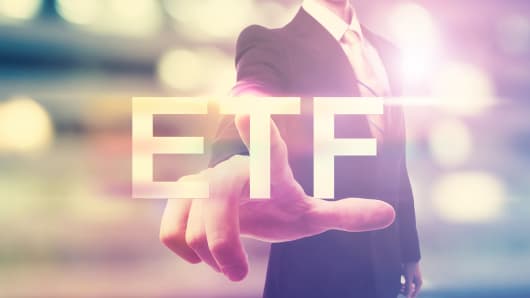
The ETF.com “Inside ETF” conference, the biggest exchange-traded fund conference in the world, kicks off Sunday night with north of 2,000 participants and four days of packed events.
Despite higher volatility and lower returns, 2015 was another record year for ETF flows, with roughly $242 billion in net inflows, an increase of about 10 percent. By comparison, mutual funds had $125 billion in outflows.
That’s $2.1 trillion in assets under management, and while it is still small in comparison to the roughly $11 trillion in assets under management at mutual funds, the mutual funds have been steadily losing assets for years.
That was enough money to attract a lot of new providers. Jeff Gundlach of DoubleLine Capital. John Hancock. Goldman Sachs. Eaton Vance. Even Kevin O’Leary of “Shark Tank” got into the ETF act last year.
There are now north of 1,600 ETFs, and more than 70 ETF providers.
I’ll be reporting Monday and Tuesday from the conference. Here’s an early peak at the hot topics everyone is talking about.
ETFs are cheap, and getting cheaper
How much lower can ETF charges go, and who’s going to throw in the towel?
It’s a race to the bottom. iShares cut fees on its “Core” ETFs last year. The iShares Core S&P Total Stock Market ETF now has a 0.03 expense ratio (that’s 30 cents for every $1,000 invested). Charles Schwabimmediately followed suit.
Read MoreBuy these two ETFs for 2016: Traders
What’s it all mean? There’s a serious price war going on, and investors are the winners. It means lower revenue for ETF providers, but they are hoping to make it up with more volume. It’s a risky strategy. When the price wars are over, who will still be standing?
And it’s going to get even cheaper. John Hyland, who used to run theU.S. Oil Fund, has founded a new company, PointBreak ETFs, designed to introduce lower-cost ETFs in areas that are still relatively expensive, like country funds (India or China), commodity funds, and thematic ETFs like HACK (cybersecurity), which charges 75 basis points.
Smart beta funds keep growing
“Smart beta” is the hot buzzword right now. What’s smart beta? It’s weighting an ETF index to anything that is not market-cap weighted.
Jeff Gundlach made a splash last year when he entered the ETF business with a smart beta bond fund. The biggest hit last year was theWisdomTree Europe Hedged Equity, which combined currency hedging with a smart beta strategy, where the stock selection tracks a dividend weighted European index.
But is smart beta really better than plain old market-cap weighted indexes? I have my doubts. Most of these funds haven’t been around long enough to make a judgment. Let’s face it, smart beta is just a variation of active management, and we know what that’s done.
Read MoreBeware these costly ETF & mutual fund mistakes
Regardless. We’re going to see a lot of smart beta this year because it’s a relatively new product, and providers can charge a little bit more for them.
Or they hope they can charge more. Goldman Sachs entered the ETF business last year with an interesting product, the ActiveBeta U.S. large Cap Equity ETF, which tracks an index that uses four “factors” (value, momentum, quality, and low volatility) and costs only 9 basis points, well below the cost of other so-called smart beta funds, which usually charge 50 basis points or more.
Active management is coming—for better or worse
While active management has long been a big part of the mutual fund business, it is still a tiny part of the ETF business. But that is changing.
Jeff Gundlach did well last year with his actively managed bond fund. AdvisorShares, which runs several active management strategies that mimic a slew of different strategies, has not fared so well.
But this year, more active management will be coming, and in a different format. Eaton Vance will be coming with a “nontransparent” active ETF, that is, the investors will not know what the fund is investing in until many months later.
Wasn’t that an advantage of ETFs, that you always knew what the fund was holding? I think so, but apparently the industry — most of which come from the mutual fund business — believe there is a market for this.
Read MoreThe answer for investors tired of trying to time oil rebound
Personally, I think more active management is confusing for ETF investors, and for registered investment advisers who invest client money in ETFs.
Why does active management persist, despite the growing popularity of passive investments that track indices? Because: 1) there is a huge industry that insists they are smarter than the market; and 2) there’s more money in it than passive management.
The only good news is that active management ETFs will drive down the cost of active management. Whether that justifies the mediocre returns that active management has posted is another question.
[“source -pcworld”]



